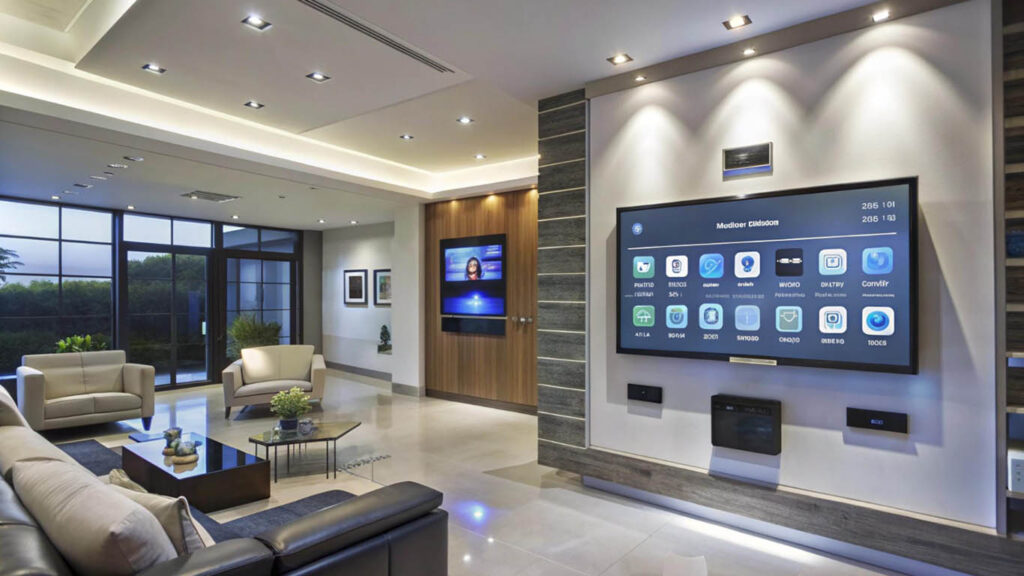In the age of digital transformation, our homes are becoming smarter, more efficient, and increasingly tailored to our lifestyles. What was once the realm of science fiction—lights that respond to voice commands, thermostats that learn our preferences, and fridges that track groceries—is now a reality. Smart living is not just about convenience; it’s about creating a home that enhances comfort, security, and sustainability through thoughtful integration of technology.
The Rise of the Smart Home
A smart home incorporates technology to automate and control systems such as lighting, heating, security, and appliances. This integration allows homeowners to monitor and manage their living spaces through smartphones, tablets, or voice-activated devices like Amazon Alexa, Google Assistant, and Apple HomeKit.
The appeal of smart home technology lies in its flexibility and scalability. Whether you’re designing a new home or updating an existing space, smart features can be introduced gradually—starting with something as simple as a smart light bulb and evolving into a fully automated system.
Enhancing Comfort and Convenience
One of the biggest advantages of smart home design is personalized comfort. Smart thermostats like Nest or Ecobee can learn your daily routine and adjust the temperature automatically to suit your preferences, reducing energy use without sacrificing comfort. Similarly, smart lighting systems can be programmed to dim or brighten according to time of day or activity—ideal for reading, working, or relaxing.
Voice-controlled assistants make daily tasks even easier. From setting reminders and checking the weather to playing music or controlling other devices, these tools bring a hands-free, seamless experience to modern living.
Improving Energy Efficiency
Sustainability is a major focus of modern design, and smart technology plays a crucial role in reducing a home’s environmental footprint. Smart plugs, sensors, and power strips allow you to monitor energy consumption and automatically shut off devices when they’re not in use.
Solar panel systems combined with smart energy storage can further optimize energy use, storing excess power for use during peak hours. Water-saving smart irrigation systems and leak detectors can also help conserve resources and protect the home from costly damage.
Boosting Home Security
Security is another critical area where smart technology shines. Smart locks, video doorbells, motion sensors, and surveillance cameras offer real-time alerts and remote access, giving homeowners peace of mind whether they’re at home or away.
You can unlock the door for a guest from your phone, receive a notification when a package is delivered, or monitor your property with 24/7 camera access—all with a few taps on a screen. Many systems can even integrate with emergency services for faster response times.
Designing with Tech in Mind
Integrating smart technology into home design isn’t just about gadgets—it’s about planning and architecture. Designers and builders are increasingly working with tech experts to create layouts that allow for seamless connectivity, discreet wiring, and centralized control systems.
Open floor plans, custom cabinetry for devices, and designated charging stations are becoming common in modern homes. Thoughtful placement of outlets, routers, and hubs ensures consistent Wi-Fi coverage—essential for a connected lifestyle.
The Future of Smart Living
As artificial intelligence (AI), machine learning, and the Internet of Things (IoT) continue to evolve, so will the capabilities of smart homes. We’re moving toward a future where homes not only respond to our commands but anticipate our needs. Imagine a home that dims the lights when you start a movie, preheats the oven as you leave work, or adjusts air quality based on real-time data.
With each innovation, smart living is becoming more accessible, customizable, and integrated into everyday life.
Conclusion
Integrating technology into modern home design is about more than aesthetics or luxury—it’s about creating functional, sustainable, and responsive spaces that enhance daily living. Whether you’re starting small or building a fully automated home, smart living offers the tools to make your home safer, greener, and more connected. As technology continues to advance, the homes of tomorrow are already taking shape today.


